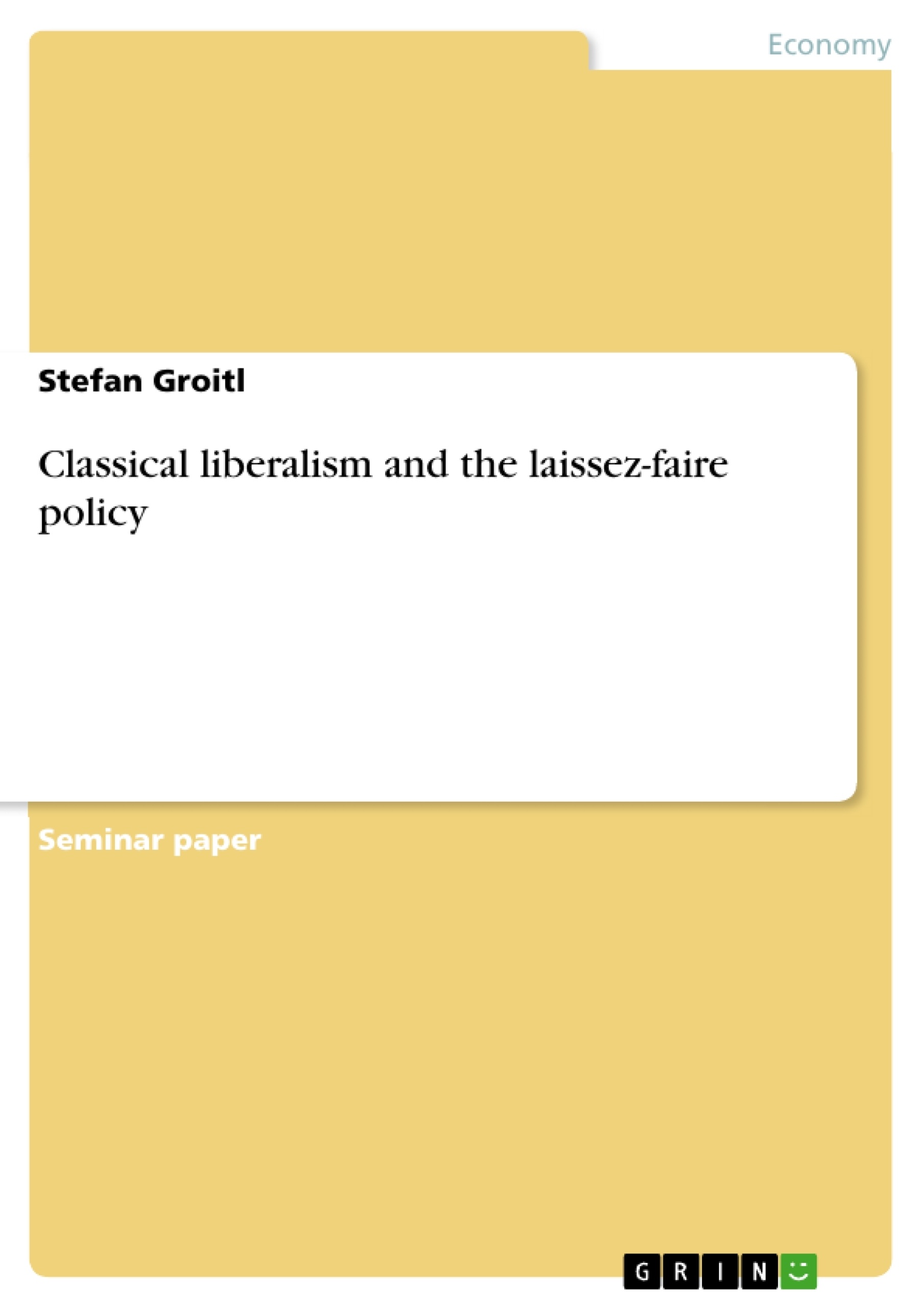The political ideology of classical liberalism is a coherent vision how society should be organized. It became the dominant political philosophy in the middle of the nineteenth century (Hudelson, 1999, p.38). But it is important to distinguish between the different forms of liberalism. It has different meanings, depending on the century the expression was used. In the eighteenth and nineteenth century it can be labeled as ‘classical liberalism’ (Hill, 1964, p.394). In the twentieth century it can be denoted as ‘welfare liberalism’ (Hill 1964, p.394). The main difference between these two is the extent of governmental action (Hill, 1964, p.394). Core features of the classical liberalism are the liberty of individual citizens and the commitment to free markets and free trade, which are seen as the best way to organise economic life (Hudelson, 1999, p.37). Some important representatives of the classical school are Smith, McCulloch, Senior, Cairnes, Ricardo and Mill (Taylor, 1972, p. 27).
Table of Contents
- Classical Liberalism and the Laissez-Faire Policy
- Adam Smith and the Invisible Hand
- The Expression "Laissez-Faire"
- Adam Smith and Laissez-Faire
- The Classical School and Laissez-Faire
- John Maynard Keynes and Laissez-Faire
- The Great Depression and Laissez-Faire
- Laissez-Faire in the 19th Century
- Laissez-Faire in the 21st Century
Objectives and Key Themes
This text provides a historical and analytical overview of the concept of classical liberalism and its associated policy of laissez-faire. It examines the origins and development of this ideology, focusing on key figures like Adam Smith and John Maynard Keynes, and analyzing the economic, social, and political implications of laissez-faire throughout history.
- The evolution of classical liberalism and its relationship to laissez-faire policy
- The theoretical foundations and historical context of laissez-faire
- Key figures and their contributions to the development of laissez-faire
- The impact of laissez-faire on economic systems and societal structures
- The ongoing debate surrounding the efficacy and relevance of laissez-faire in the modern world
Chapter Summaries
- Classical Liberalism and the Laissez-Faire Policy: This chapter introduces the concept of classical liberalism as a political ideology and its relationship to the laissez-faire policy. It discusses the historical development of classical liberalism and its key features, including individual liberty and free markets.
- Adam Smith and the Invisible Hand: This chapter explores the contributions of Adam Smith, a key figure in classical liberalism, to the theory of laissez-faire. It analyzes Smith's concept of the invisible hand and its implications for economic prosperity.
- The Expression "Laissez-Faire": This chapter delves into the origins and evolution of the term "laissez-faire." It traces its use by various thinkers and explores the different interpretations of its meaning.
- Adam Smith and Laissez-Faire: This chapter examines Adam Smith's specific stance on laissez-faire. It explores his advocacy for limited government intervention in the economy and his support for free trade.
- The Classical School and Laissez-Faire: This chapter analyzes the broader classical school of economics and its relationship to laissez-faire. It discusses the different views within the school regarding the role of government intervention.
- John Maynard Keynes and Laissez-Faire: This chapter focuses on the critique of laissez-faire by John Maynard Keynes. It explores Keynesian economic theory and its rejection of the "do-nothing" approach of classical laissez-faire.
- The Great Depression and Laissez-Faire: This chapter examines the impact of the Great Depression on the debate surrounding laissez-faire. It analyzes the emergence of Keynesian economics as a response to the economic crisis and its subsequent influence.
- Laissez-Faire in the 19th Century: This chapter explores the role of laissez-faire in 19th-century Britain. It examines the social and economic context of the time and the dominance of laissez-faire ideas.
- Laissez-Faire in the 21st Century: This chapter analyzes the resurgence of laissez-faire in recent times, particularly in the context of globalization and the financial crisis. It discusses the ongoing debate about the role of government in the modern economy.
Keywords
Key terms and concepts covered in this text include classical liberalism, laissez-faire, the invisible hand, free markets, free trade, limited government, individual liberty, economic intervention, Keynesian economics, the Great Depression, globalization, and the financial crisis.
- Quote paper
- B.A. Stefan Groitl (Author), 2011, Classical liberalism and the laissez-faire policy, Munich, GRIN Verlag, https://www.grin.com/document/185081




